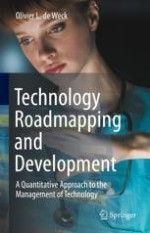2022 | OriginalPaper | Buchkapitel
11. Systems Modeling and Technology Sensitivity Analysis
verfasst von : Olivier L. de Weck
Erschienen in: Technology Roadmapping and Development
Aktivieren Sie unsere intelligente Suche, um passende Fachinhalte oder Patente zu finden.
Wählen Sie Textabschnitte aus um mit Künstlicher Intelligenz passenden Patente zu finden. powered by
Markieren Sie Textabschnitte, um KI-gestützt weitere passende Inhalte zu finden. powered by
